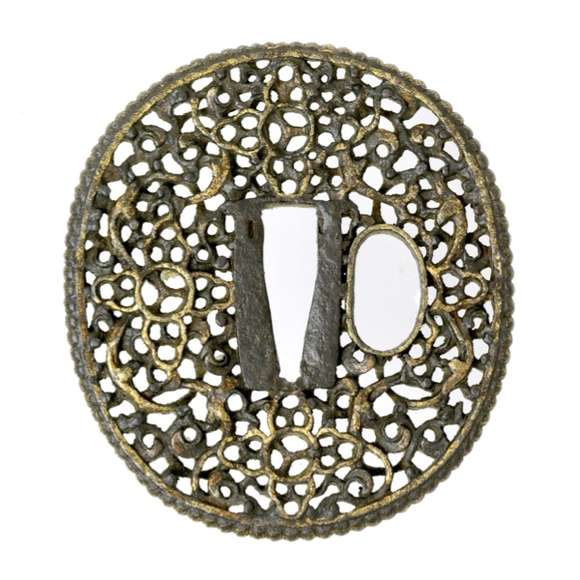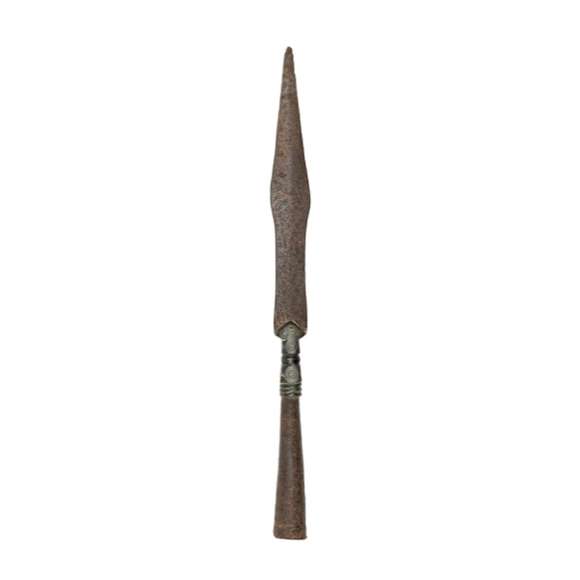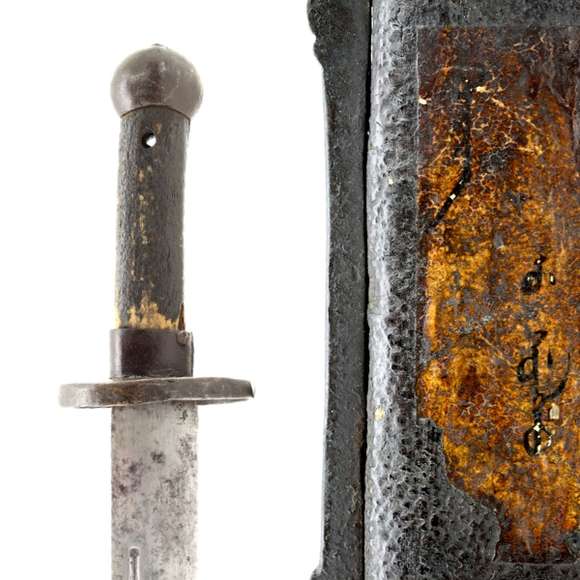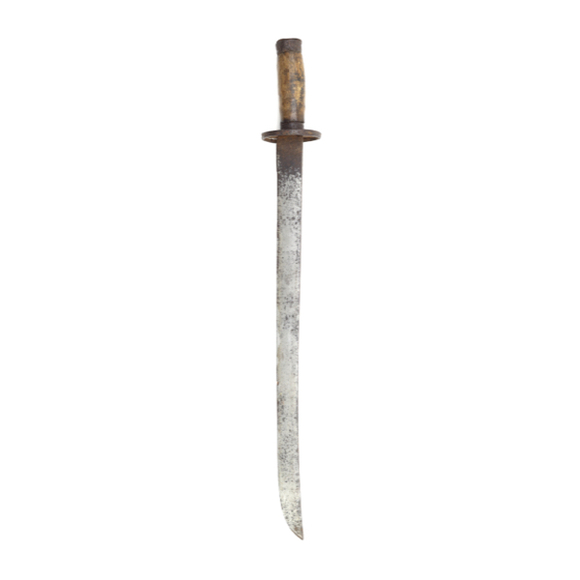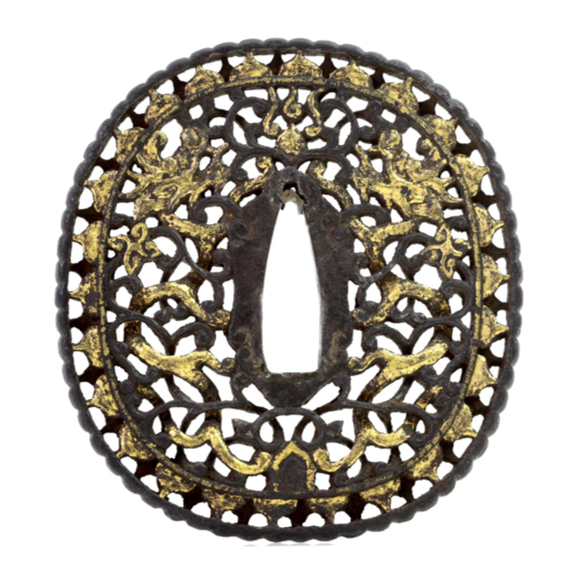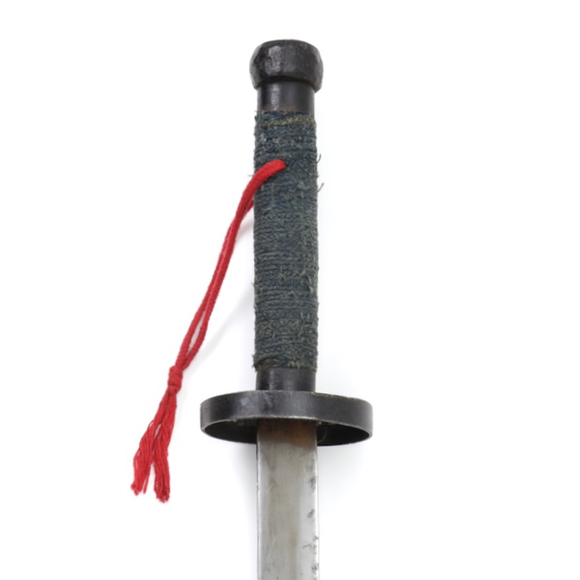A very rare Chinese saber guard dating from the height of the Qing dynasty.

64 cm / 25.2 inch
49 cm / 19.3 inch
Base 5 mm
Middle 3 mm
Near tip 2.5 mm
Base 49 mm at base
At spike 106 mm
1003 grams
China, Qing dynasty
Iron, steel, brass
Probably 19th century
Introduction
One of the most iconic of Chinese weapons, the yǎnyuèdāo (偃月刀) is commonly known as "Guandao" after the famous general Guan Yu, an actual historical figure that was deified as early as the Sui dynasty as a symbol of loyalty and righteousness. This term is only rarely found in historical references, and most military texts from Song to Qing refer to the weapon as yǎnyuèdāo (偃月刀), which is why I stick with this name as well.
This example
Presented is a yǎnyuèdāo blade of classic shape: The wide blade dramatically sweeps backward, with a scalloped backedge leading to the spike. A decorative ornament is still attached to the hole in the spike. The blade emerges from the mouth of a brass dragon, shaped with protruding eyes and ears. This is a representation of Yázì (睚眦), the most aggressive of the nine sons of the dragon of classical Chinese mythology.
The blade is pretty well-made, with signs of an inserted hardened edge plate. Some damage to the very tip, and a crack at the upper base of the spike.
Very unusual is the fact that it is not tanged but socketed. A strike with such a blade puts a lot of lateral stress on the point where it connects to the shaft, which is why there is usually a long tang secured by pins, often reinforced with a metal sleeve on these. This socketed design choice may be because whoever made it was used to making agricultural implements, a village smith producing something for a martial artist or militia.

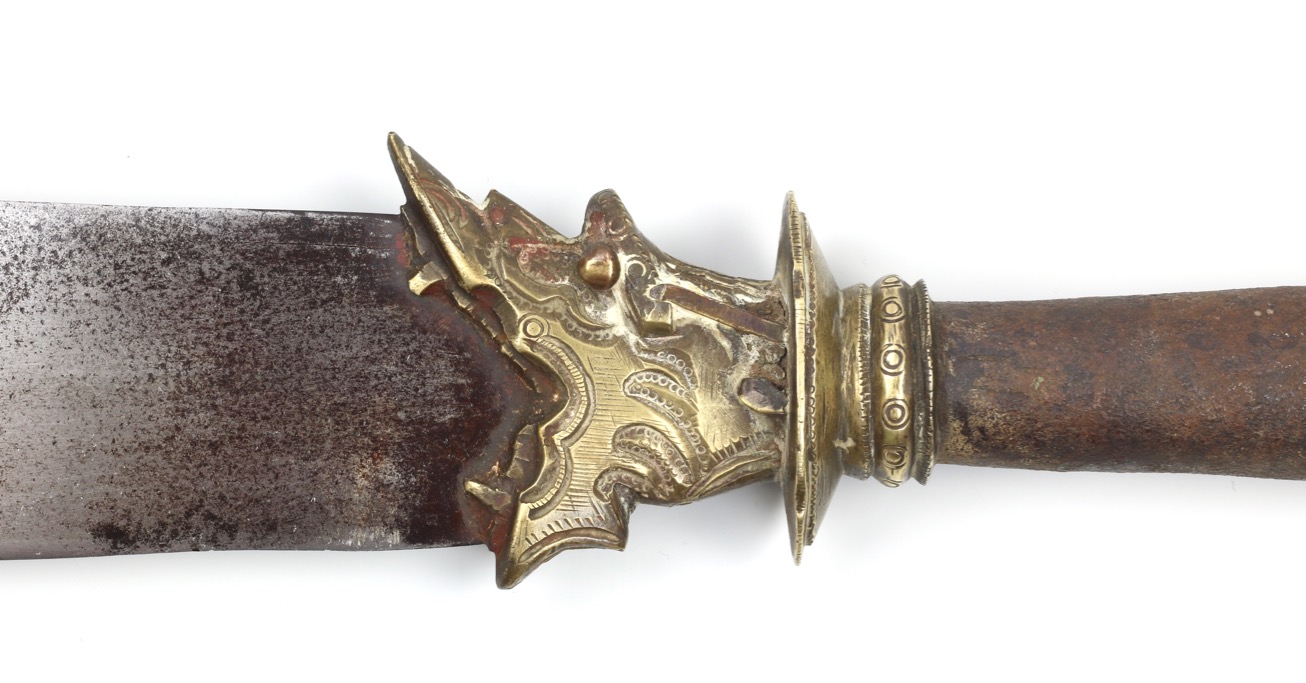
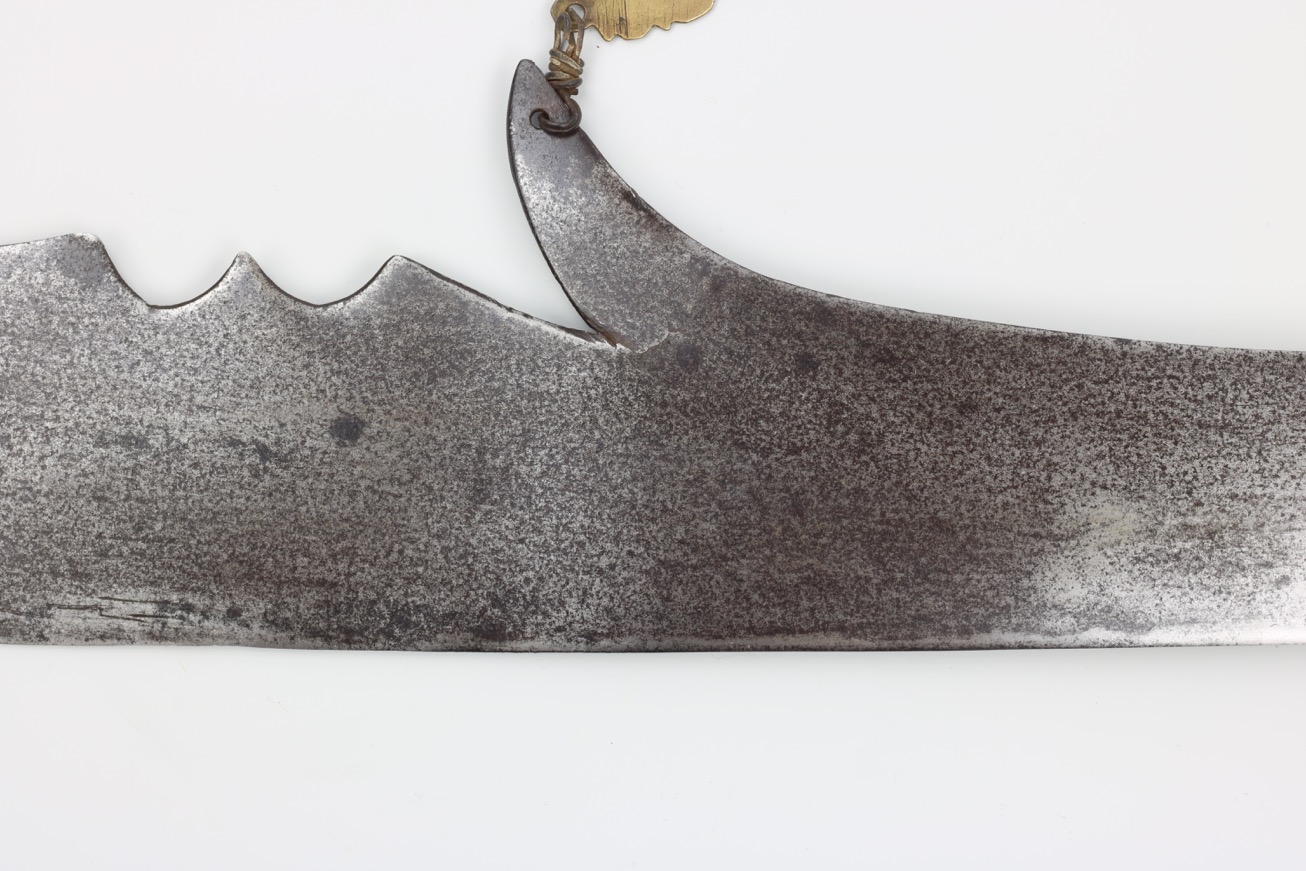
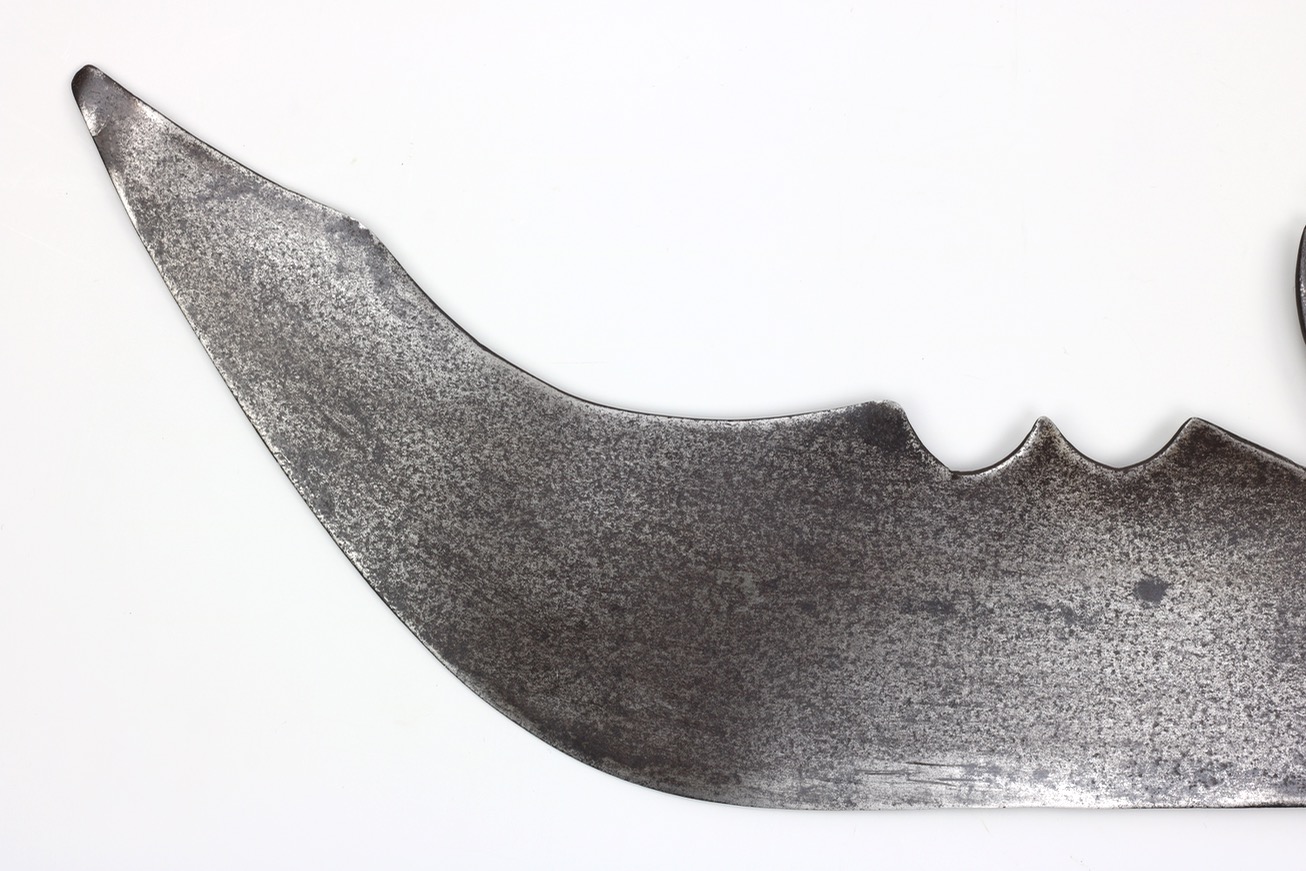
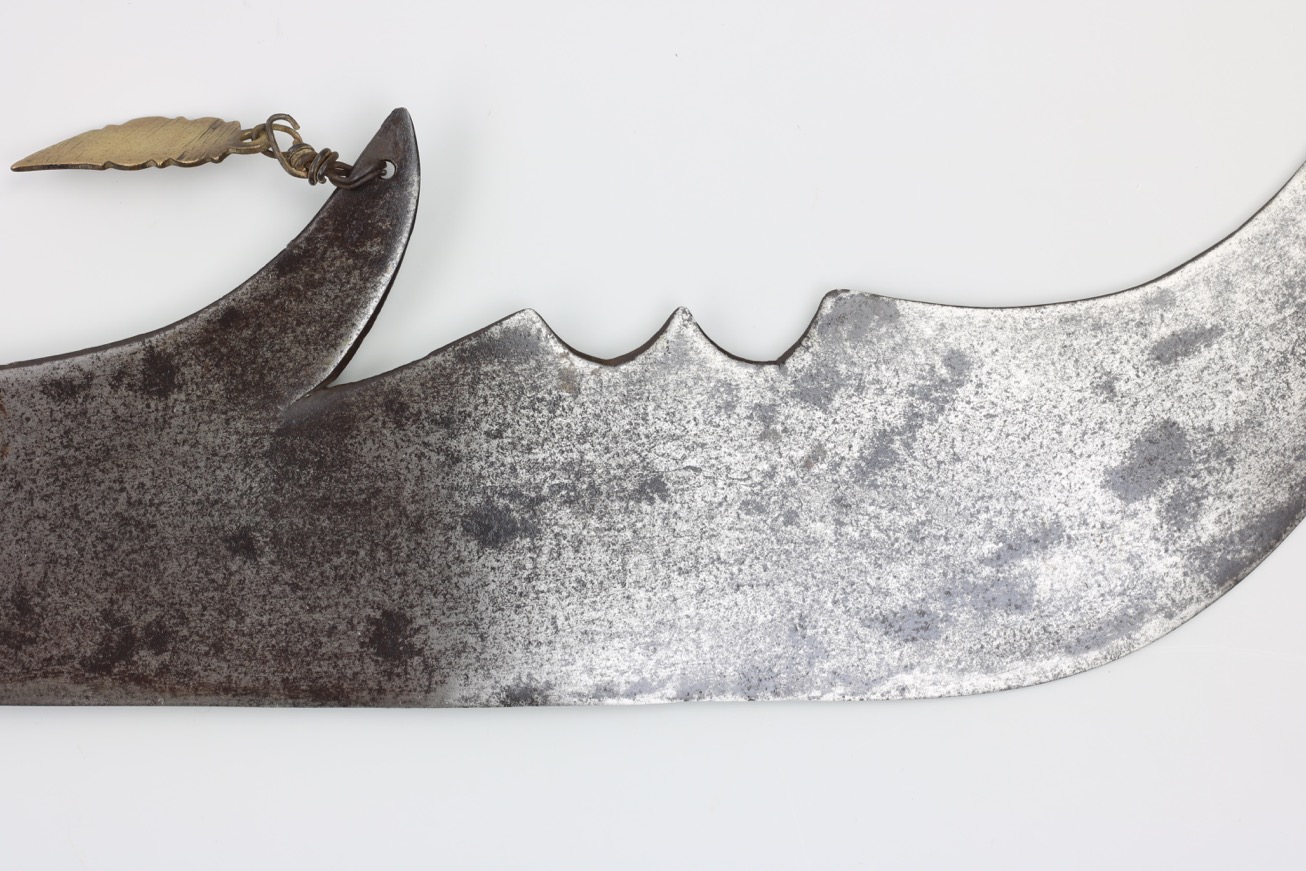
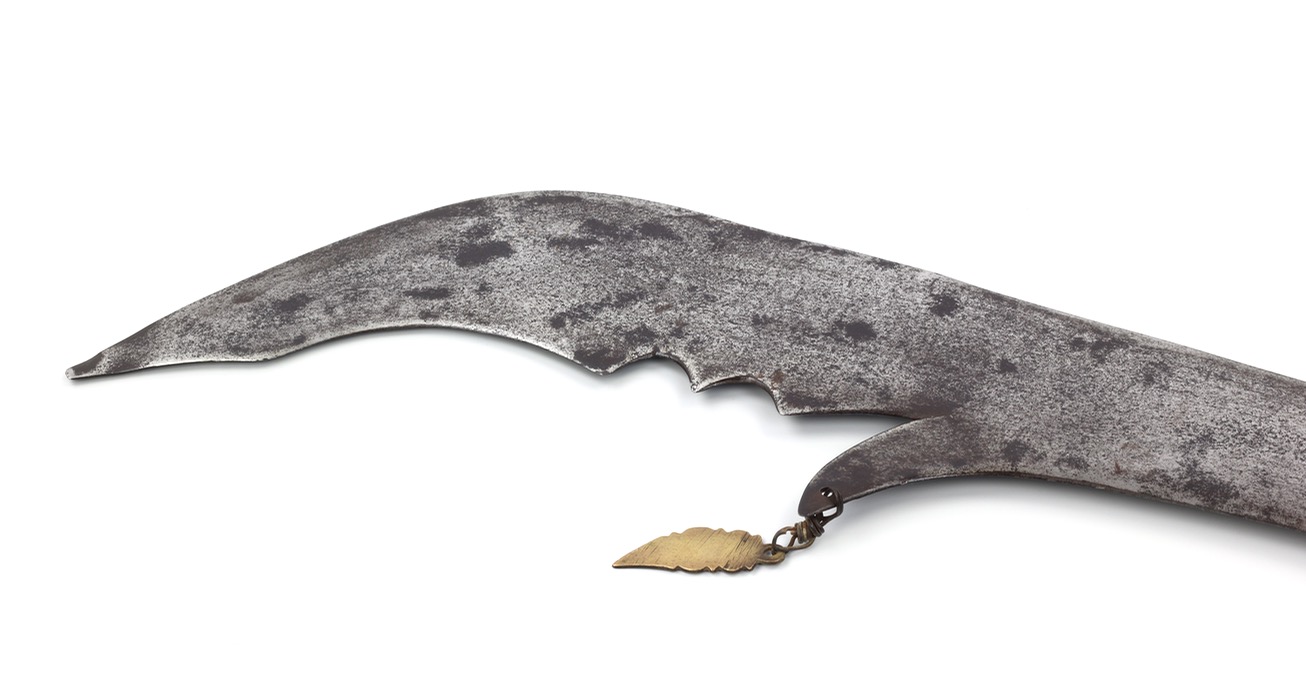
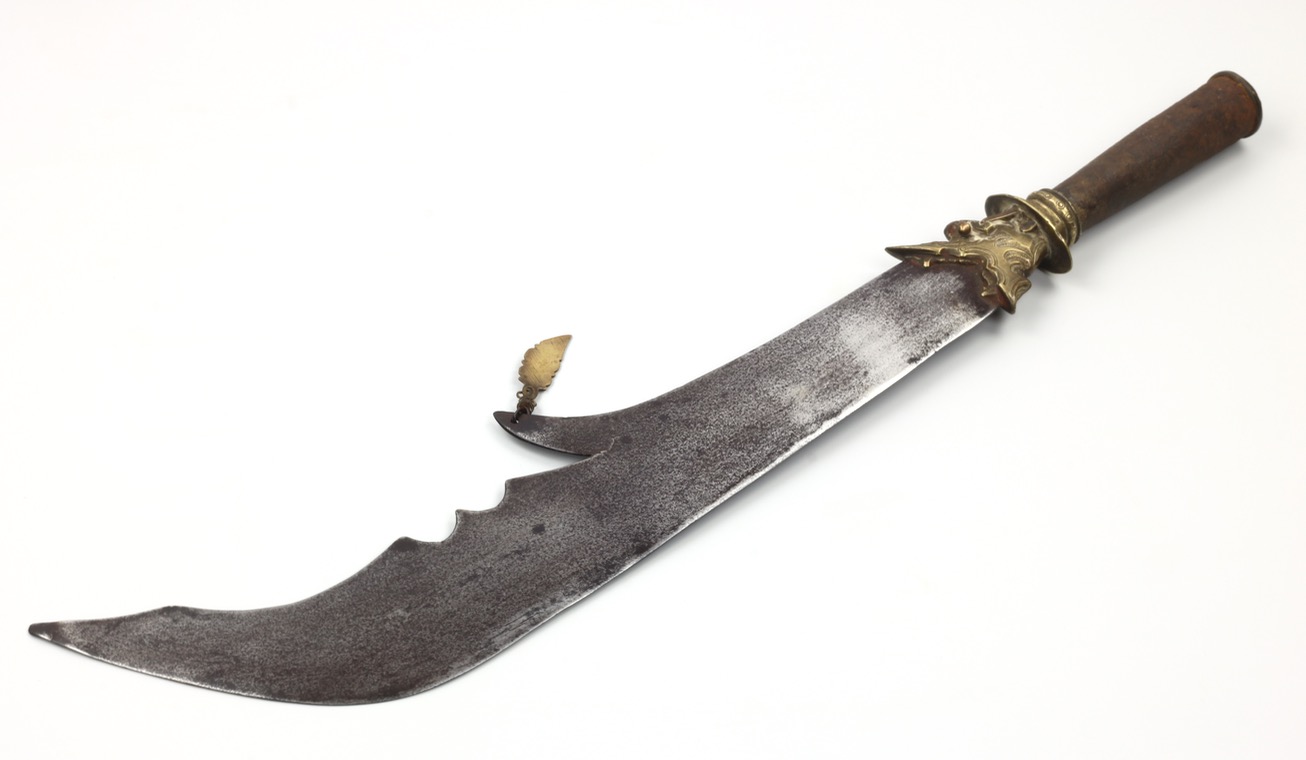
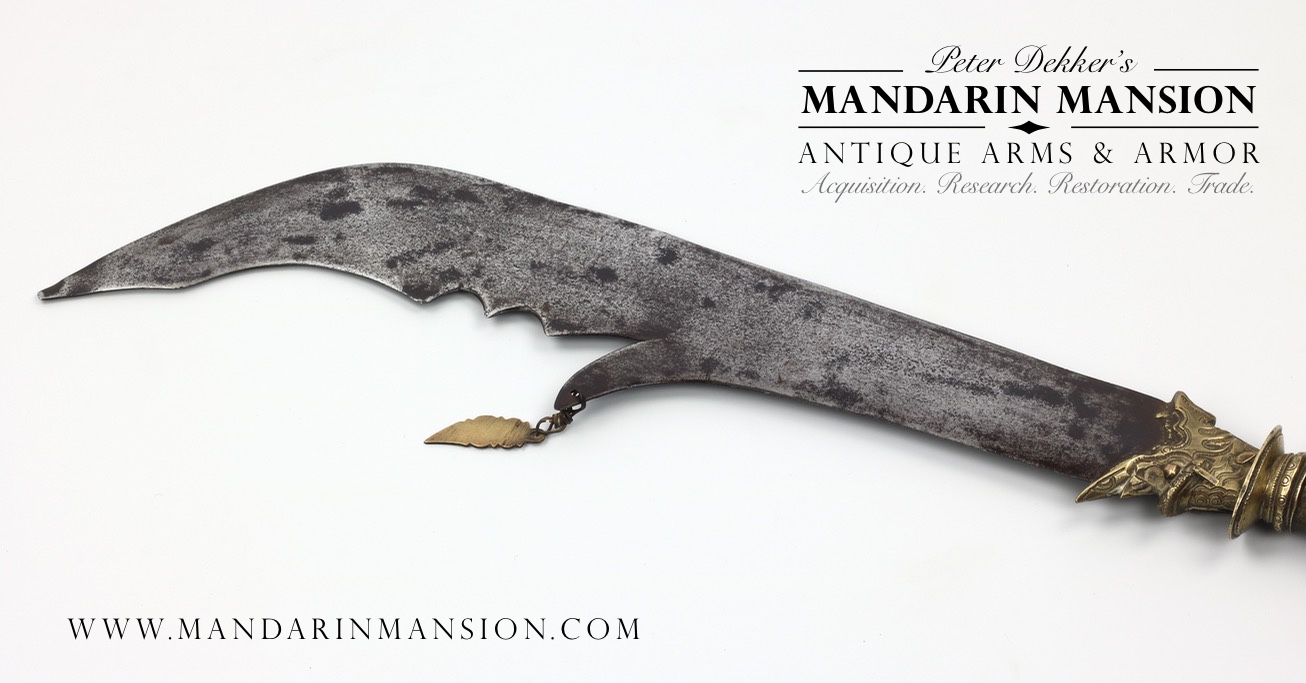
Of classic shape, with a leaf-shaped blade on a socket, connected by a cast bronze base.
A standard pattern Qing military saber, but with the rare addition of a label in Manchu.
A simple utilitarian weapon, probably made for rural martial artists or militia.
In the style of northern work of the 16th and 17th centuries
Probably of Southern origin, with a straight blade and flaring tip.

